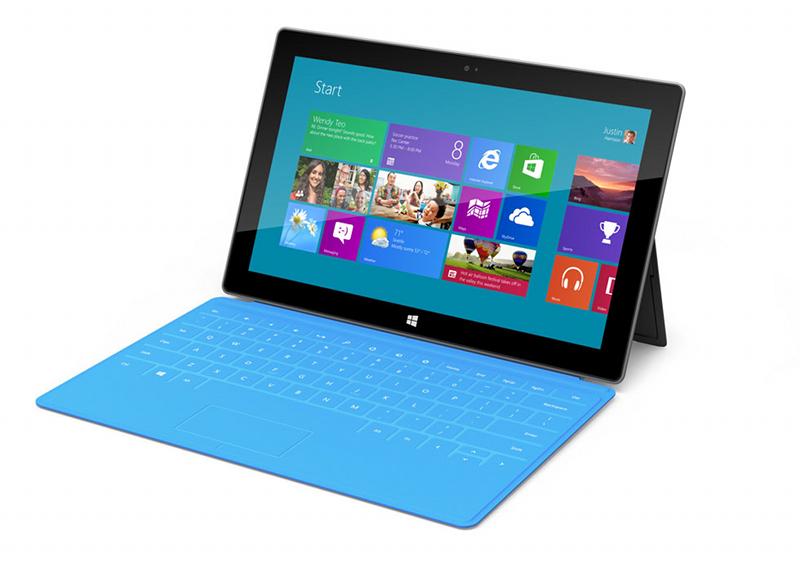Samsung no longer plans to launch a tablet in the U.S. running Microsoft's Windows RT platform due to a number of factors, including consumer confusion and slow sales.
Mike Abary, a Samsung executive in charge of the company's American PC and tablet businesses, told CNet at this week's Consumer Electronics Show that it would require "a lot of heavy lifting" to educate consumers on the difference between Windows 8 and Windows RT. With retail partners also signaling that Windows RT has "modest" potential for success, Samsung decided it wasn't interested in making that investment in the U.S. market.
Abary also said that Samsung had difficulties hitting the lower price points the company felt it needed to achieve. The Korean electronics maker believes that Windows RT devices should be less expensive than PCs running the full Windows 8 operating system.
"We didn't necessarily attain the price point we hoped to Attain," Abary said. He noted that some of the sacrifices the company explored to cut costs, such as including less memory, were poor tradeoffs.
Samsung could still build to opt Windows RT devices in the future, if some of the current obstacles cease to exist. Abary told CNet his company will wait to see how the market develops for Windows RT.
"It's not something we're shelving permanently," he said. "It's still a viable option for us in the future, but right now might not be the right time."
Samsung has, however, invested heavily in tablets running Google's Android operating system. Windows RT is a stripped down version of Microsoft's desktop operating system compatible with low-power ARM CPUs like those found in Apple's iPad.
It's Windows RT's reliance on ARM processors that prevents it from running traditional Windows applications. The underlying architecture of Windows RT is very different from Windows 8, preventing it from running legacy Windows applications.
Further confusing matters is the fact that Windows RT features both the touch-centric Windows Metro interface along with a traditional Windows desktop layout, just like Windows 8. Windows RT also includes touch-optimized versions of Microsoft Office applications, including Word, Excel, PowerPoint and One Note.
Microsoft has reportedly had to revise its return policies for its own Surface tablet running Windows RT. The changes were made after a number of customers apparently returned the hardware once they discovered the Surface cannot run traditional Windows applications.
 AppleInsider Staff
AppleInsider Staff







-m.jpg)






 Charles Martin
Charles Martin
 Malcolm Owen
Malcolm Owen

 Mike Wuerthele
Mike Wuerthele
 Christine McKee
Christine McKee


 Marko Zivkovic
Marko Zivkovic


-m.jpg)






129 Comments
The only hope this tablet had to succeed is if it could run in dual boot mode to allow a real Windows experience and not a crippled one. That might at least offer some benefit to former netbook customers looking for the portability of a tablet but also needing to use it just like a laptop as well. The 2.0 version will probably address this shortcoming and could fill a niche. The iPad is a far superior option on many levels and so are pretty much all the android tablets as well. This device will fly first class on a one way trip to the island of misfit toys.
cant blame samesung on this one. Windows RT is a complete abomination. Only an idiot would buy something that bad.
Floppy flop flop
Not worth copying
[quote name="gwmac" url="/t/155435/samsung-nixes-plans-for-windows-rt-tablets-in-us-citing-modest-demand#post_2257900"]The only hope this tablet had to succeed is if it could run in dual boot mode to allow a real Windows experience and not a crippled one. That might at least offer some benefit to former netbook customers looking for the portability of a tablet but also needing to use it just like a laptop as well. The 2.0 version will probably address this shortcoming and could fill a niche. The iPad is a far superior option on many levels and so are pretty much all the android tablets as well. This device will fly first class on a one way trip to the island of misfit toys.[/quote] Even if it was the regular Windows 8 OS but on ARM it would still be worse than Windows 8 OS on an Atom-based system, which pretty much defines the CPU used in the netbook category. The reason the iPad feels so fast is because they got rid of all the crap that would make it impossible to run Mac OS X on ARM. Looking at the base install sizes of WinRT compared to iOS for iPad and the fact that the classic UI is still there MS wasn't willing to build it from the ground up.